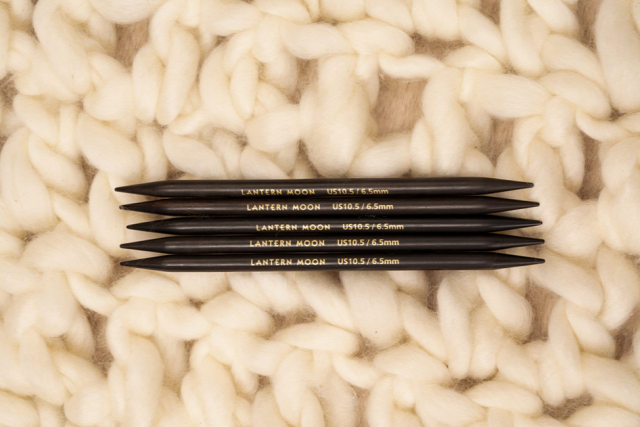
Are you overwhelmed while working with double-pointed needles? There’s no reason to stay away from DPNs. They are handy whenever you need to knit small circumferences. Think of socks, baby hats, necklines, and sleeves. DPNs have been in use for centuries and, to date, are preferred to knit things in the round. The five needles and ten points may seem challenging to handle. However, working with DPNs is believed to be a rite of passage for knitters to become masters truly. Whether you’re working for the first or 100th time, there are chances of mistakes, but the key is to correct them and have fun with your craft. If you are a beginner uneasy knitting with double-pointed needles, we’ll walk you through useful tips to become a pro in this blog.
Take a look at these tips
1. Cast on stitches on one needle tip and then divide them evenly
When you knit with double-pointed needles, you use three or four needles to make a circumference while knitting with the extra one. Ensure to cast stitches on one needle tip and divide them evenly, which will help you maintain the tension. Moving the slip knot also helps to move the stitches and maintain the tension. It is also helpful to move the stitches on the needles after a few rounds to balance the tension throughout the project.
Say, for example, you have to cast 30 stitches. Use any of your preferred methods to make stitches. Count the slip knot as the first cast-on stitch unless the pattern mentions otherwise. If your pattern asks you to use three DPNs, slip 10 stitches on each needle. But if you need to work with four needles, then slip 7, 8, 7, and 8. Ensure that if you cannot divide the stitches evenly, you try to divide them equally as possible.
2. Work with 3 Needles
While working with double-pointed needles, fewer needles in the round mean less chance of mistakes. If your pattern mentions 4 DPNs for the circumference, yet the stitch count is less, you can work with three needles but make sure to have the right length. Say, for example, you have 40 stitches and have been instructed to work with four needles, stick to 3, and you can still work the round smoothly. With options of 6-inch and 8-inch lengths, choose the right set of DPNs for your project accordingly. While 6-inch needles are ideal for socks, a sweater will require 8-inch lengths to accommodate the circumference.
3. Neatly join the round
Joining the round neatly is essential whether you work with DPNs or circulars. It is more significant to use double points as you may have to deal with ladders and gaps. There are many ways to join the stitches. An invisible join is a knitters’ favorite. To make an invisible join, you start by casting an extra stitch, and instead of knitting the stitch, slip it over. When working with DPNs, explore the various methods to join the round and understand what works for you. With time and practice, you’ll master the techniques.
4. Avoid laddering by maintaining tension
Ladders are a common problem that knitters face while working with double points. Where two knitting needles join, stitches stretch or far apart, looking like the aftermath of a dropped stitch. Now a trick to solve this problem is to maintain constant tension but also to tighten up the second stitch on every DPN or the last stitch of the round.
5. Add Stitch Markers and Point Protectors
Knitting accessories are essential when you are working with double-pointed needles. Stitch markers and point protectors both are useful. Stitch markers are used for the purpose of marking and reference in a project. To identify the start of the round when working with DPNs, you’ll need stitch markers even though the yarn tail is there to remind. But instead of placing one at the last stitch of the round where it may slide off the needle, place it on the second last stitch. Similarly, needle protectors are useful, especially when you keep the project down for the day. The needle tips are covered, making it difficult for stitches to slide off by accident.
With these handy tricks, you will soon enjoy knitting with DPNs and reach for them for most of your circular projects. To enjoy working with double-pointed needles, the Lantern Moon collection offers smooth ebony wood knitting needles. Wooden knitting needles are preferred over others as the material ensures a balanced flow of yarn while stitch making. The needles' luxury silk finish and precision tips make for an enjoyable knitting session every time you pick them up.


